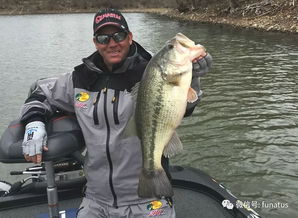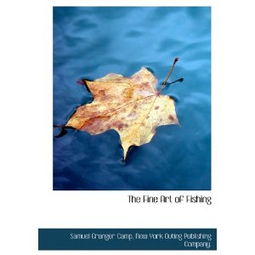In the serene world of angling, the art of placing fish bait can be the difference between a successful day on the water and a fruitless endeavor. Whether you're a seasoned angler or a beginner looking to improve your skills, understanding how to place your fish bait effectively is crucial. This article delves into the essential techniques for fish bait placement, ensuring that your next fishing trip is a fruitful one.
Understanding Fish Behavior
Before we delve into the techniques, it's important to understand the behavior of the fish you're targeting. Different species have varying preferences when it comes to where they seek out food. For instance, some fish may be more attracted to bait placed near the bottom, while others may prefer it suspended in the water column. By understanding the habits of your target species, you can better position your bait for success.
The Basics of Bait Placement
Depth: The depth at which you place your bait depends on the species and the conditions. For instance, if you're fishing for bass, you might want to place your bait on the bottom to mimic natural prey. Conversely, for species like trout, you might want to suspend your bait just above the bottom to attract fish that are feeding in the mid-water column.
Current: Current can significantly affect where fish are likely to be found. In areas with strong currents, you may need to place your bait closer to the bottom to ensure it stays in the fish's feeding zone. In calmer waters, you might be able to place your bait higher in the water column.
Structure: Structure, such as rocks, logs, or weed beds, can create prime feeding areas for fish. Placing your bait near these structures can increase your chances of catching fish. Pay attention to the contours of the water and look for areas where fish are likely to congregate.
Techniques for Bait Placement

Using a Baitcaster: If you're using a baitcaster, start by casting your bait out to the desired location. Once it lands, allow it to sink to the appropriate depth. Use your rod's sensitivity to feel for any resistance or changes in weight, which could indicate a fish is interested in your bait.
Using a Spinning Reel: Spinning reels are great for casting lighter baits and can be more precise. Cast your bait out and let it sink to the desired depth. Use a slow retrieve to allow your bait to swim naturally, mimicking the movement of real prey.
Scented Baits: Using scented baits can attract fish from a greater distance. However, it's important to place the scent effectively. Apply the scent to the tip of your bait or to a special scent pod that you can attach to your line. This ensures that the scent travels through the water column, drawing in fish from various depths.
Using Artificial Lures: Artificial lures can be placed in a variety of ways, depending on the type of lure and the species you're targeting. For example, a spinnerbait can be retrieved quickly to create a burst of motion that attracts fish, while a soft plastic worm can be twitched or worked slowly to mimic a struggling baitfish.
Advanced Techniques
Jigging: Jigging involves bouncing your bait up and down near the bottom. This technique is effective for species like walleye and pike. To jig, cast your bait out and let it sink to the bottom. Then, pull your rod tip up and down in short, quick strokes to create a lifelike movement.
Trolling: Trolling involves slowly moving your boat while dragging your bait behind it. This technique is great for covering a lot of water and can be effective for a variety of species. Adjust the speed of your boat and the depth of your bait to find the sweet spot.
Using a Fish Finder: A fish finder can be a valuable tool for determining the depth and location of fish. By using a fish finder, you can adjust your bait placement to coincide with the fish's depth and activity level.
Conclusion
The art of fish bait placement is a skill that takes time to master. By understanding the behavior of your target species, utilizing the right techniques, and paying attention to the environment, you can significantly increase your chances of success on the water. Whether you're using live bait, artificial lures, or scented baits, the key is to be patient, observant, and willing to experiment. With practice and experience, you'll develop a keen sense for where and how to place your bait, leading to more rewarding fishing experiences. Happy fishing!












